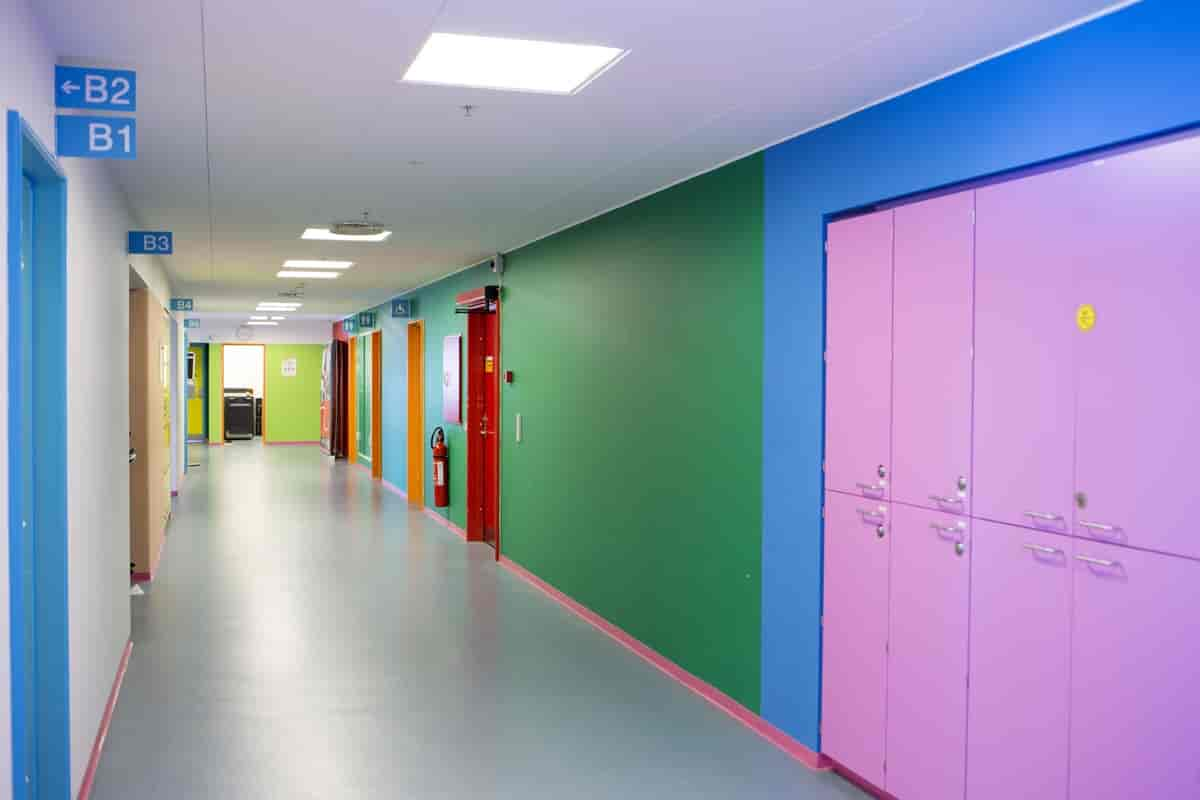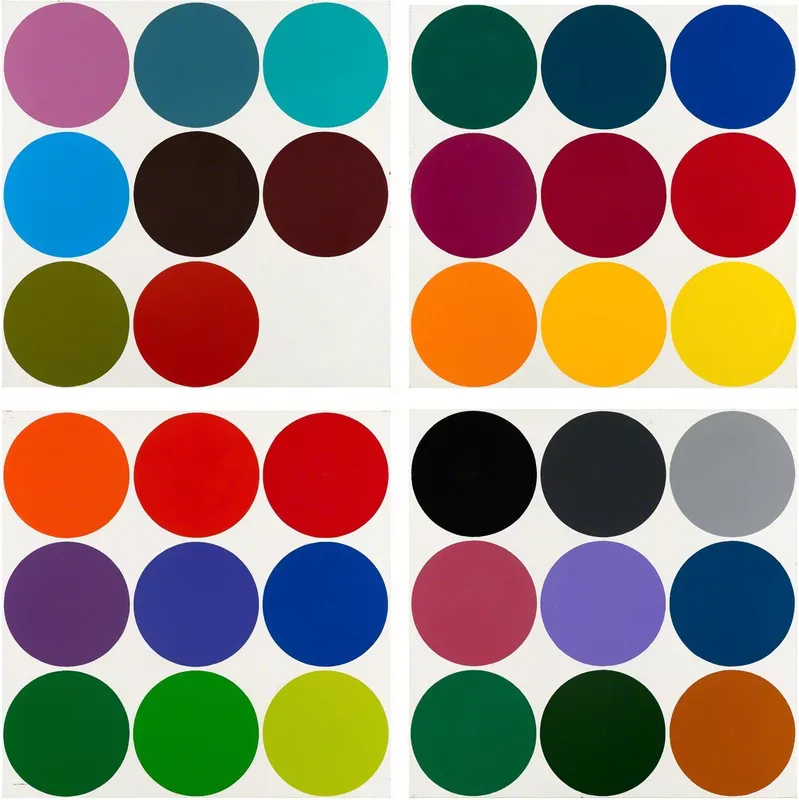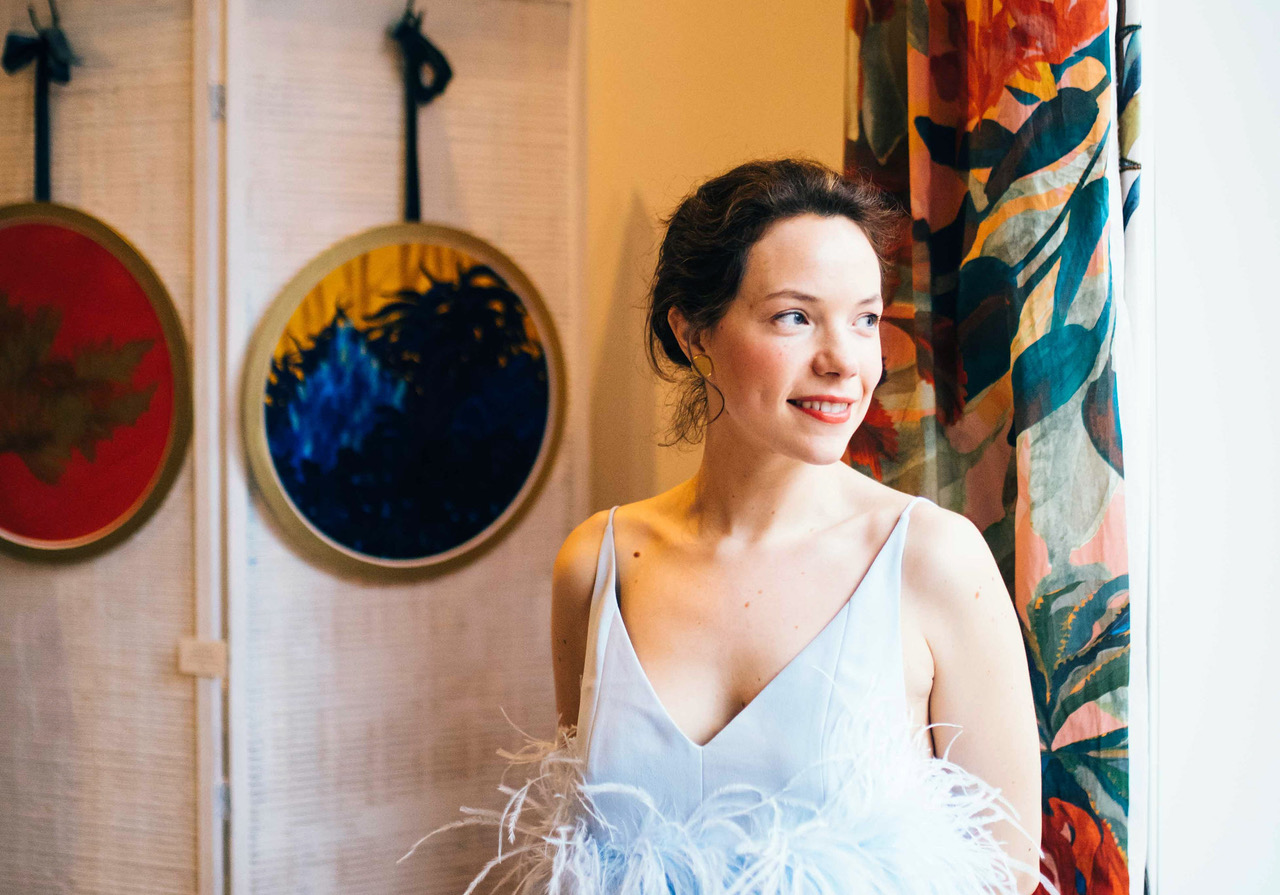Three word to describe the spaces in most hospitals:
UNIFORMITY STANDARDIZATION and MONOTONY.
When taking the elevator, a patient or visitor may fall and get lost on a different floor than the one he/she wanted to go to because all floors look the same. Some patients may become disoriented by the endless sequence of white walls common to all floors throughout the building.
In opposition to this, the unique model of Hospital Art at Herlev Hospital near Copenhagen in Denmark is remarkable, striking, and ingenious. It was created by the great Danish artist Poul Gernes.


It was already one of the first polychrome hospitals in the world. Initially, the artist Gernes was commissioned to paint only the entrance hall but was later asked to add color to the entire building, including the patients’ rooms. In addition to decorating the walls and interior, the hospital’s foyer includes 65 individual paintings and two painted folding doors. Gernes described his work at the hospital as having an artistic and atmospheric function.
By atmospheric, Gernes meant primarily that color played an indispensable structural role in helping people find their way and navigate the space. Color breaks up the uniformity and monotony that is often associated with institutional spaces, such as hospitals.


Large, uniform spaces can be incredibly disorienting, negating any landmarks that help with navigation, and paralyzing all the senses. As Gernes describes, color is an easy way to solve these structural problems.
“I am not sure if I am tricked to believe I am in a circus or kindergarten, reminding me of joyful memories as a child, and if that is what is causing my brain to spark. Or if it is the colors themselves hitting my nervous system in just the right way. No matter what, it works wonders for me!” (Testimony of a Herlev Hospital patient)


When the power of art to engage the public both on a sensory and intellectual level is fully embraced, its presence in hospitals becomes a testament to a forward-thinking vision of health care – a medical vision of the body as a body experienced beyond its mere biological structure, a sensory entity indissolubly interconnected to its thinking brain.
“Colors cheer me up because you need them in here. You experience very emotional situations here when everything is horrible and you don’t feel like going on. The colors cheer me up and indicate that there’s a world outside where these colors can be found, and that’s why I’m here. So I can go out and experience those colors again, and not be here forever.” (Testimony of a leukemia patient at Herlev Hospital)





